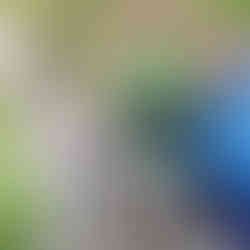March Mud-licious Integrated Learning
- Vicky Moore

- Mar 3, 2019
- 4 min read
My second home growing up was a stream in the woods behind our house. In the winter I'd plow off the gnomes' ice skating rinks, and build little hot coco shelters on its' banks. The rest of the year I was busily creating mud potions, cakes, damming up mini water falls, redirecting the flow, gathering precious pebbles, and harvesting skunk cabbage. I was fasciated with the textural jewel like orb hidden in its center which looked so sculptural and otherworldly, yet was also responsible for that intense stink.

In short, yes, mud is dirty, yet it's also awesome. Mud offers not only a wealth of different open ended learning opportunities, yet human purpose really.
Why Mud Play Matters
At times parents can strain to see the value of not only allowing, yet dare I say it, encouraging and partnering in mud play with their youngsters. Yet, twenty years of research reveals that children who grow up with frequent exposure to different flora and fauna bacteria are more resilient health wise than children who grow up without those, in overly clean, sterile environments. Today, researchers recommend that children get all in there, siting that playing in the dirt not only can boost the body’s immune system, it may decrease the risk of allergies and asthma as well. Aside from physical aspects, mud play can also enrich our attention and mood.
Many studies indicate that getting messy outdoors decreases stress and anxiety in children. Individuals who come into frequent contact with the bacteria Mycobacterium vaccae, found naturally in dirt, report a better quality of life. We evolved through an intimate relationship with the earth, and yet for too long we have belittled or called poetic other human things like: getting our feet and hands in the dirt. Doctors are prescribing gardening (adult mud play) and nature walks because of this clear connection between our body, and what was and is our foundation: dirt and mud, soil, the ground beneath us. The bacteria Mycobacterium vaccae activates the neurons in the brain that contain serotonin, and chemically shifts our mental state towards joy and a feeling of goodness and peace.
For further reading on this:
Engineering with Mud Bricks: Ages 2-10 (and some 39yr olds)
Humans have been making mud bricks since ancient times. What I love about this activity is it can be as simple or integrated a learning opportunity as makes sense for your family. Little ones can mix up mud, scoop and tap it into ice cube trays for molds, and then stack and build with their very own mud blocks. Enriching their oral language development you can play with their structures, noticing how their mini car or gnome is: under, over, up, down etc... Is the castle tall or short, wide or narrow? Let's count out 3 bricks, 5, 10? Which brick is heavier or lighter? Let's paint the mud bricks, naming colors as you go. The castle could be a backdrop for storytelling, or a fun challenge to see how tall you can build it before it falls over! (predicting how many bricks, counting, graphing different attempts to see an average .... all age and readiness depending)
Older children can work with ratios and the science behind mud brick building. Predicting how much dirt, sand, and water might create the most solid bricks, will dead leaves help or hinder the strength, pine needles, acorn tops ... really whatever natural matter you have is what humans long ago would have turned to. They can measure, add, test and record their results simply on sticky notes, to more complex writing creating a recipe someone else could follow, and writing it out as a scientific report. You can estimate how long it will take for your bricks to dry. You can try oven baking some, and air drying others, comparing and contrasting, really it's about being curious yourself as an adult learning guide, and harnessing your kiddo's interests. If you are really going into mud engineering I recommend checking out Building with Stabilized Mud by K. S. Jagadish.
To bring in some cultural and historical learning you could learn about different structures built with mud bricks, their history and use, learn about roman cement which was made with ash (I'm thinking older kids here, together, with supervision, you could safely build a fire and cool and gather your ash, noticing if how it impacts the structure. Looking to geography you can see where in the world they still build with mud and why. You can add in estimating and art by drawing a blueprint, or builder's drawing of a structure you want to build, and estimate how many bricks you'll need to complete it, and then see.
One of my favorite is linking creative writing, and creating a story about who lived in your structure and what their daily life might be like. It can be historical fiction if you are working on a certain area and time frame where mud bricks were being used, learning about their foods and traditions. It can also be complete whimsy with a secret dragon chamber and a moat built to keep out lava, or what happens by the pegasus landing pad on the top tower.
Here are a few other playful muddy resources:
30 Plus Mud Activities by Growing a Jeweled Rose
How we built a mud pit by Having Fun at Chelle's House
Let Your Kids Get Dirty! by Simple Mom
Marvelous Mud by Rusty Keeler
Muddy Picture Book Companions - click here for your library list

Wet sneakers and muddy clothes are prerequisites for understanding the water cycle.
- David Sobel


















Comments